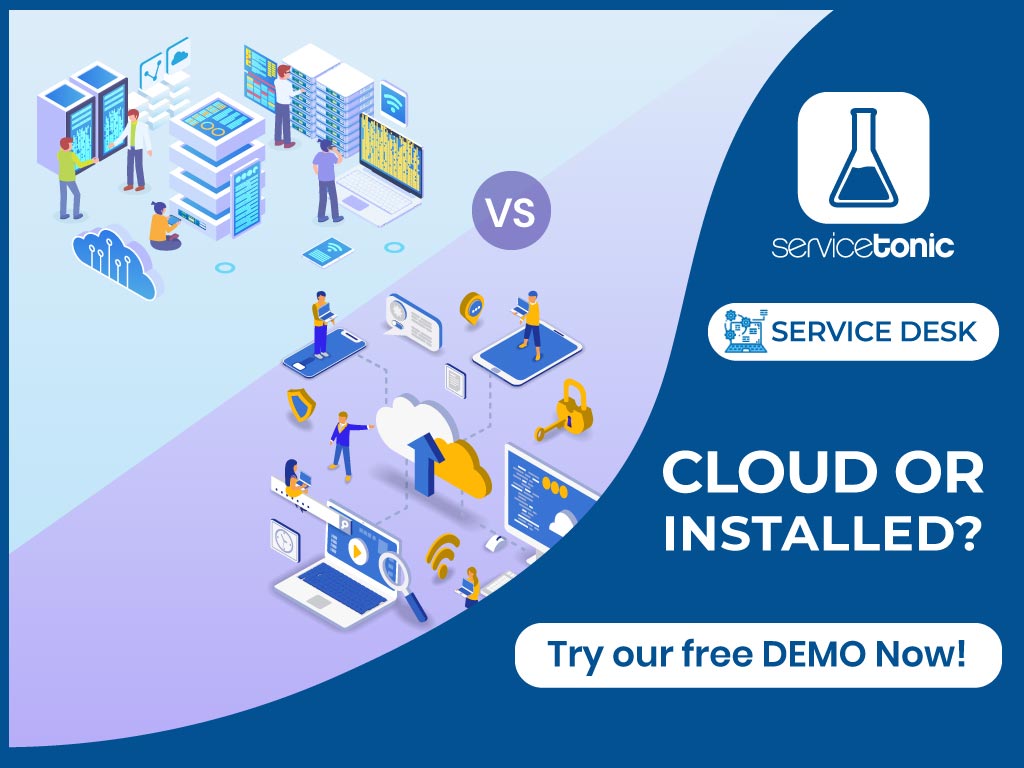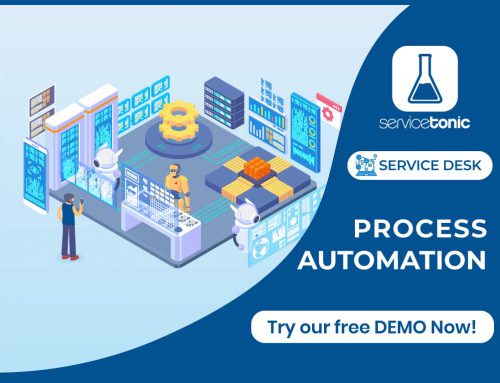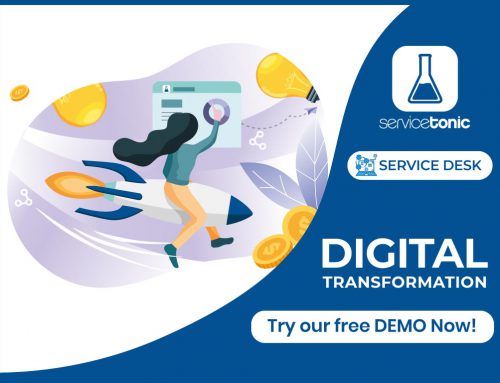Table of Contents
Pros and cons of each of the models of implementation of ServiceTonic
As web applications have become popular in their cloud mode, companies have begun to consider which option is most appropriate for their need: Cloud or installed on my servers?
This is one of the main questions for those in charge of the software selection process.
The question is not trivial and, as in many other cases, the answer will depend on various factors since the two options are completely valid and only depends on which fits best in each case.
Certainly, each model has its advantages, which are, in turn, inconvenient if viewed from the opposite perspective, as we can see in the following table of advantages of each modality:
| Installed | Cloud |
|---|---|
| Control over the whole system/data | No license free |
| The data is stored and managed directly by the client. | No separate cost for Infrastructure (servers, communications, etc…) |
| System administration is done by client. | System administration is carried out Vendor. |
| The initial investment is higher but it is amortized over time |
The solution provider handles assumes the technological management and cost. |
We could find a long list of factors to consider in order to determine, at a generic level, which option is the most valid in each case, however, we will restrict these factors to those more related to a Help Desk and IT Management with the goal of helping those customers who are asking themselves this question right now.
10 factors to consider when choosing the deploymet of a Help Desk sofware
These are the 10 main factors to take into account to select the hiring method a help desk software.
1. Infrastructue
In this case, we should consider if our organization has the necessary infrastructure to install, administer and maintain the necessary conditions to keep the Help Desk software operational. If we have the necessary resources, we can choose to Installed locally. Otherwise it would be advisable to opt for the Cloud option.
2. Human resources (technological)
Aside from the fact that we have the adequate technological infrastructure, we must ensure that we also have the human resources/ knowledge to manage it. Companies usually have these resources but it is also true that their availability for new service maintainance is usually limited. So it is advisable to take this into account while making the decision between cloud or to install locally.
3. Recipient of the service
Consider if the recipient of the service or end user of the Help Desk will use the solution from the same network where the software is installed (usually for internal users as employees) or if their access will be via the Internet (usually for external support clients).
In both cases we can opt for both options, although statistically when it will provide external client support via the Internet the most commonly used option is the cloud and when the support is to internal users the most selected option is internal hosting.
4. Security
Cloud solutions often offer very high levels of security from the standpoint of availability as the control of access and control of data.
In the case of ServiceTonic cloud its infrastructure is located in a center of high availability, using servers and fault tolerant systems that are monitored 24x7x365, providing levels of availability superior to 99.95% of the time.
However, in some cases there will be companies that by their own security policy will require certain applications to be completely under the control of the company itself. In these cases, the selected option is owning the hosting.
5. Investment
The need to make an initial investment in the option of an on premise installation can be an important factor to opt for the cloud option, since normally the cloud option does not require a substantial initial investment and its payment is usually through monthly, quarterly or annual installments that include everything you need to use the software.
However, if you have the ability to make the initial investment associated with the purchase of a license and the technical resources required to get it started, in the long run the local/on premise installation option may be more profitable.
6. TCO (Total Cost of Ownership)
The TCO or Total Cost of Ownership is often the hidden factor not taken into account when making the decision whether to acquire and host a software or hire it in cloud mode. However, TCO is the most financially relevant factor that lets us determine the real cost of ownership of the software over a period of time.
The TCO does not only include direct costs such as license, monthly fee or cost of a server, but also includes the associated costs of operating the service (administration, communications, backup systems, training, etc.).
Annual TCO of each option with a 4-year forecast, for example, will provide a very clear idea of which option is most economically beneficial to a company.
7. Software configuration
Some Help Desk tools are only available in cloud mode or installed on the client’s servers. For those solutions that allow the two options, as in the case of ServiceTonic, you should also consider whether the cloud mode has the same level of configuration as the installed mode.
Specifically, in the case of ServiceTonic, since it does not need any programming to configure the software, the same list of features are available both on premise or on the cloud.
8. Integration with other system
The ability to integrate with other systems is becoming more important for the election og a Help Desk Software. Whenever we need to exchange data between two applications, we need some kind of connectivity between them.
Currently this is not a problem since the use of Internet provides the channel for these applications to be able to connect regardless of where they are. In spite of this, it is important that we consider which applications (corporate e-mail, user directories, management applications, corporate databases) should integrate with our Help Desk Software so to make sure the selected option, cloud or installation lets us do it.
9. Duration of the project
We will choose the cloud option if we are dealing with a project of short duration or limited in time as in this case we can quickly have an Out of the box solution ready in no time and then configure it according to client requirement. We can choose the option of local installation in the case the project is of long duration or unlimited in time.
10. Set-up time
Another factor to take into account is the time in which we need to have the Help Desk software. In this case, the cloud option usually provides more advantages to those companies that require a quick start-up of their solution since availability is usually almost immediate.
Which option is the most appropriate? Cloud or installed?
Hopefully these 10 factors, will help you determine which option is most appropriate for your team and your organization.
Contact ServiceTonic if you would like us to assist you in the decision process and we would be happy to help you out.




